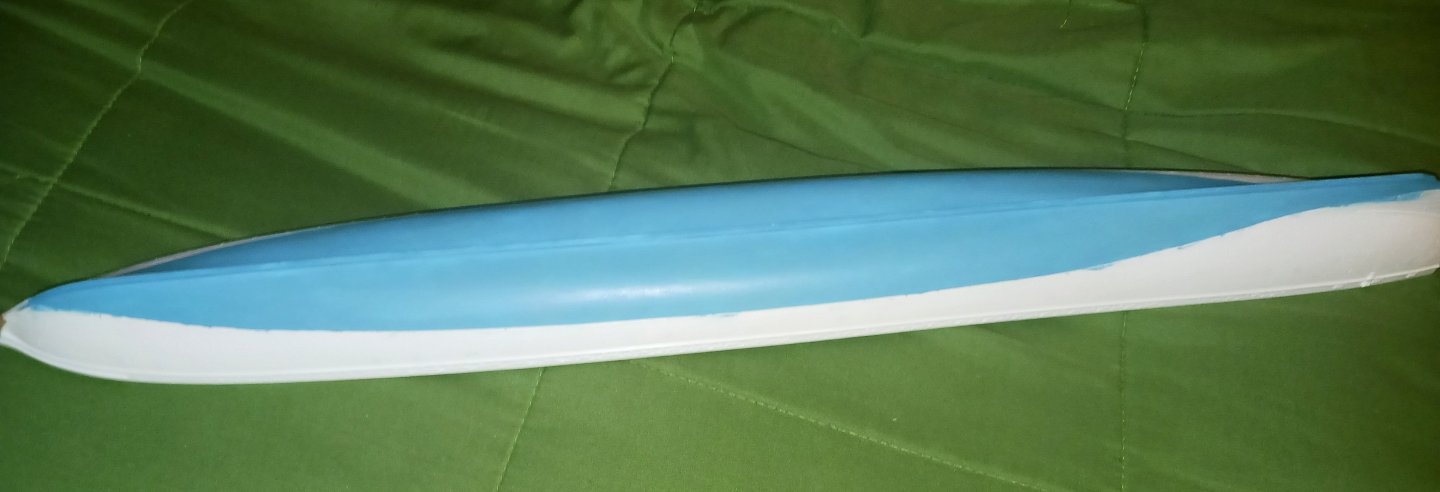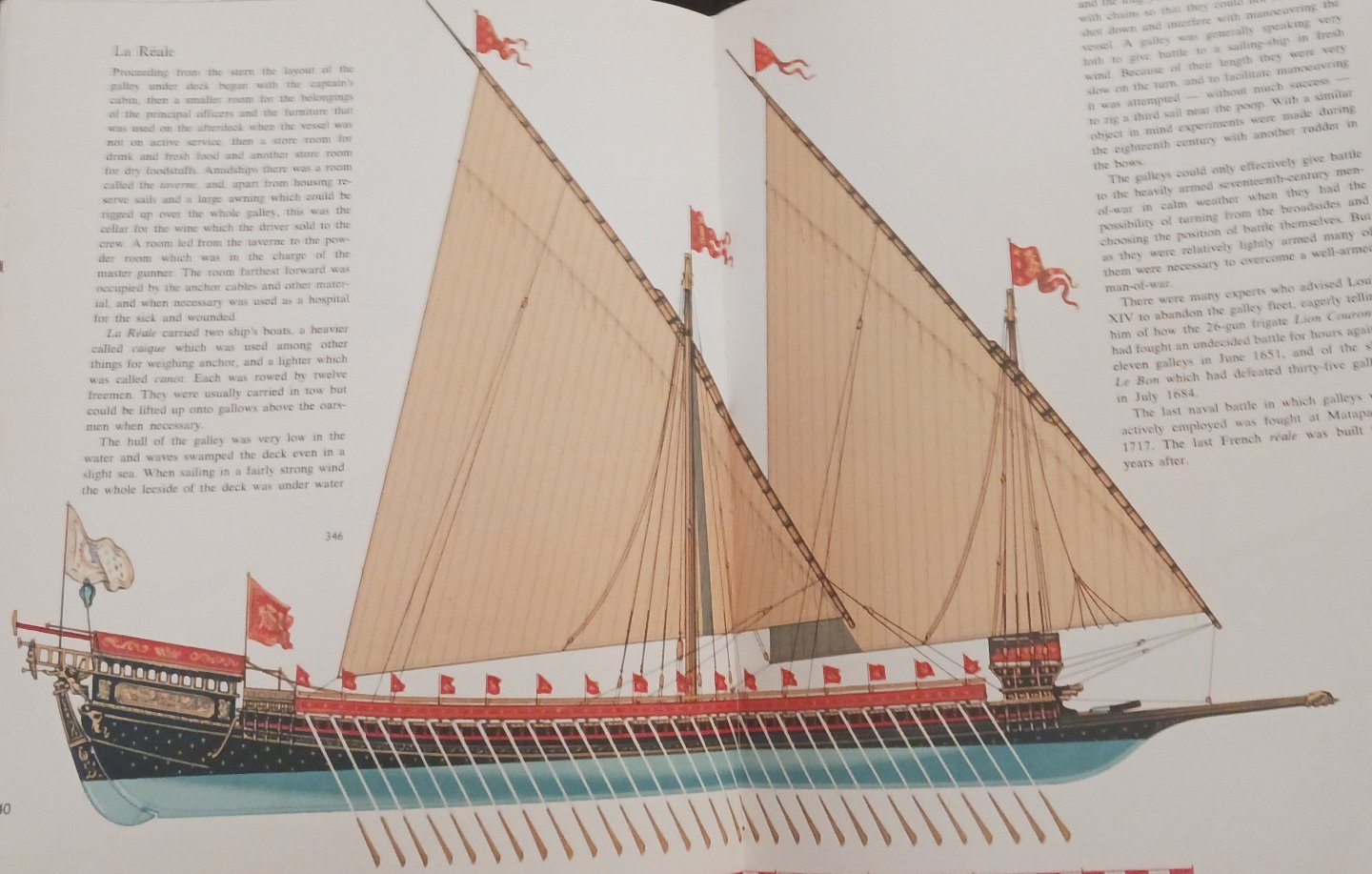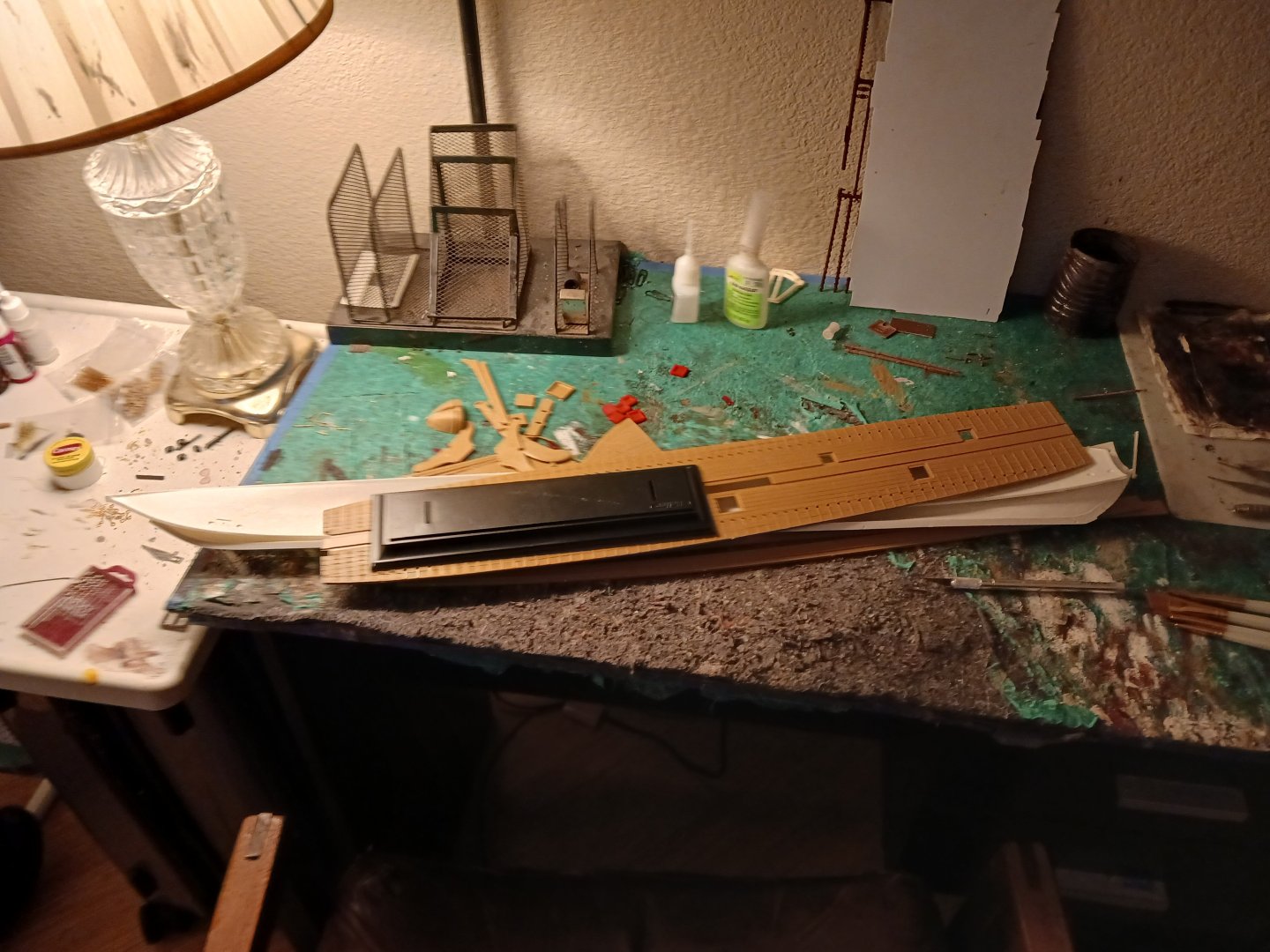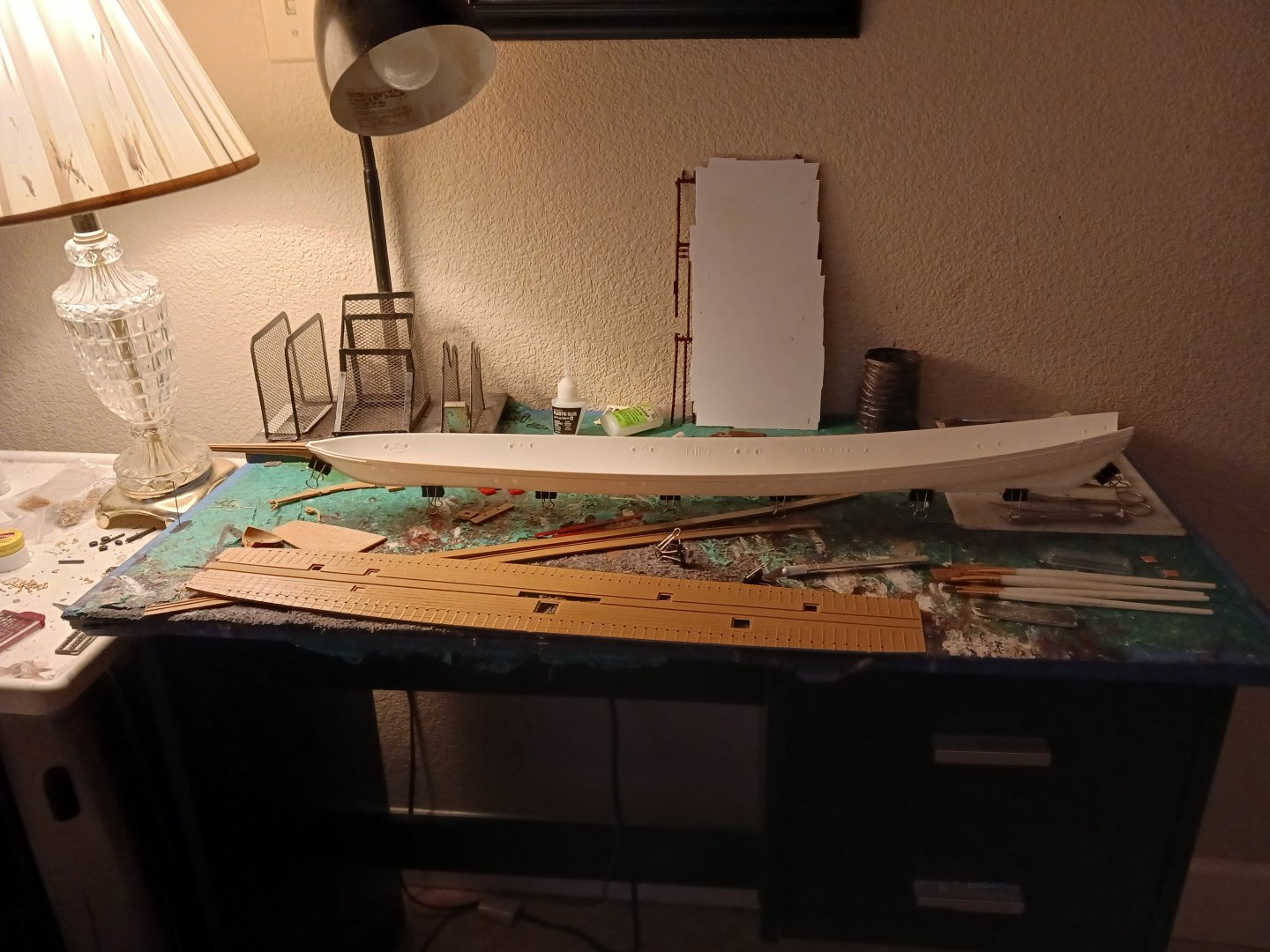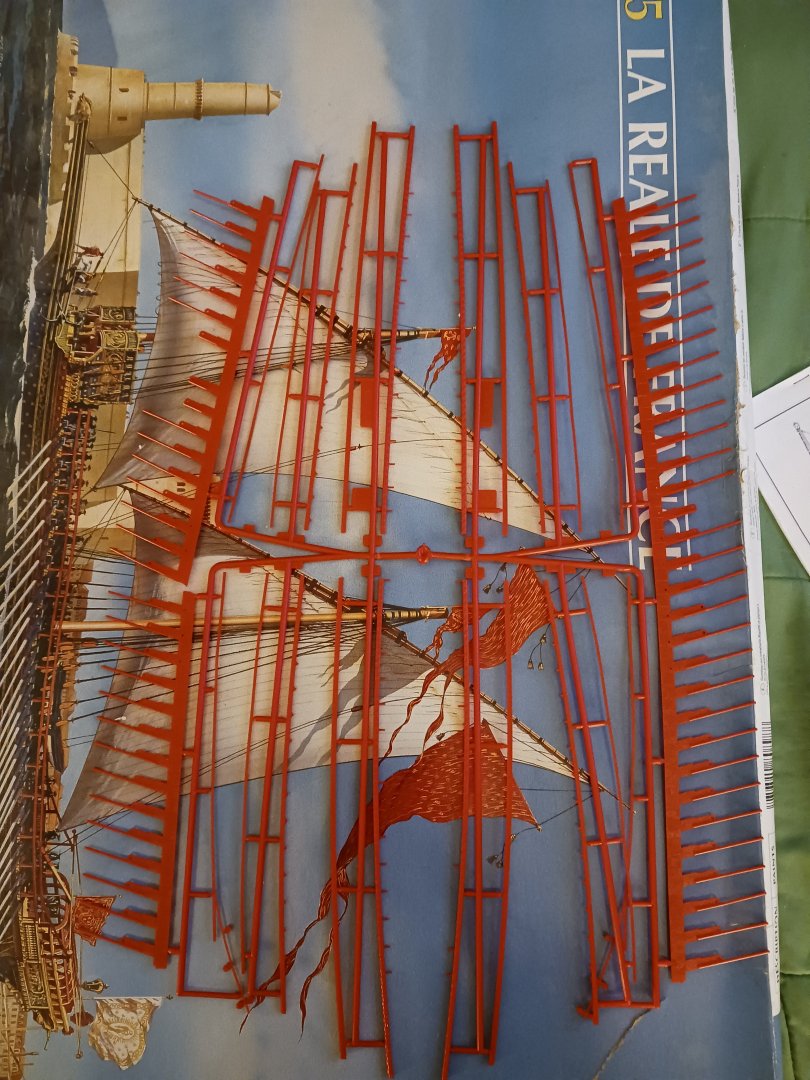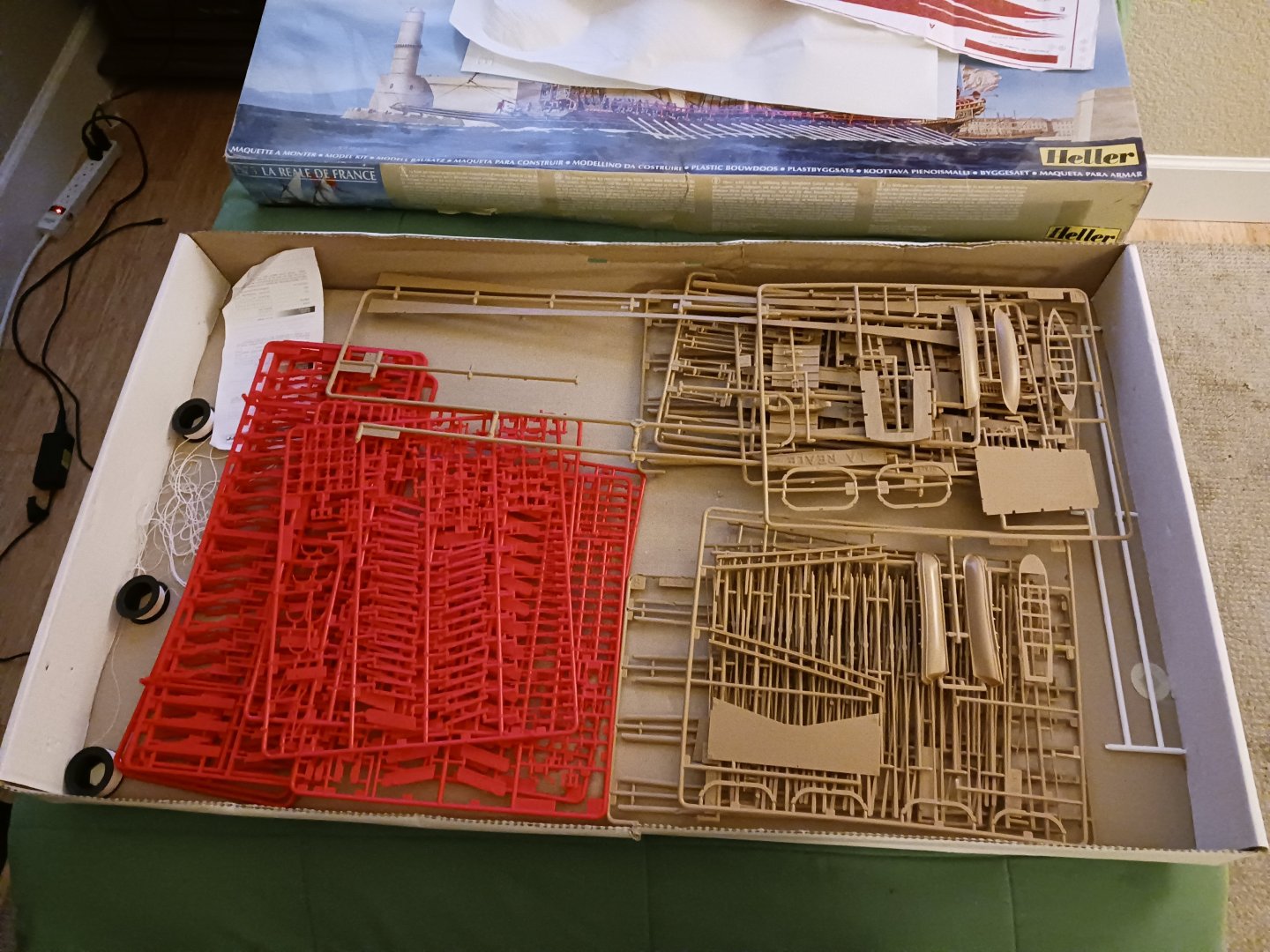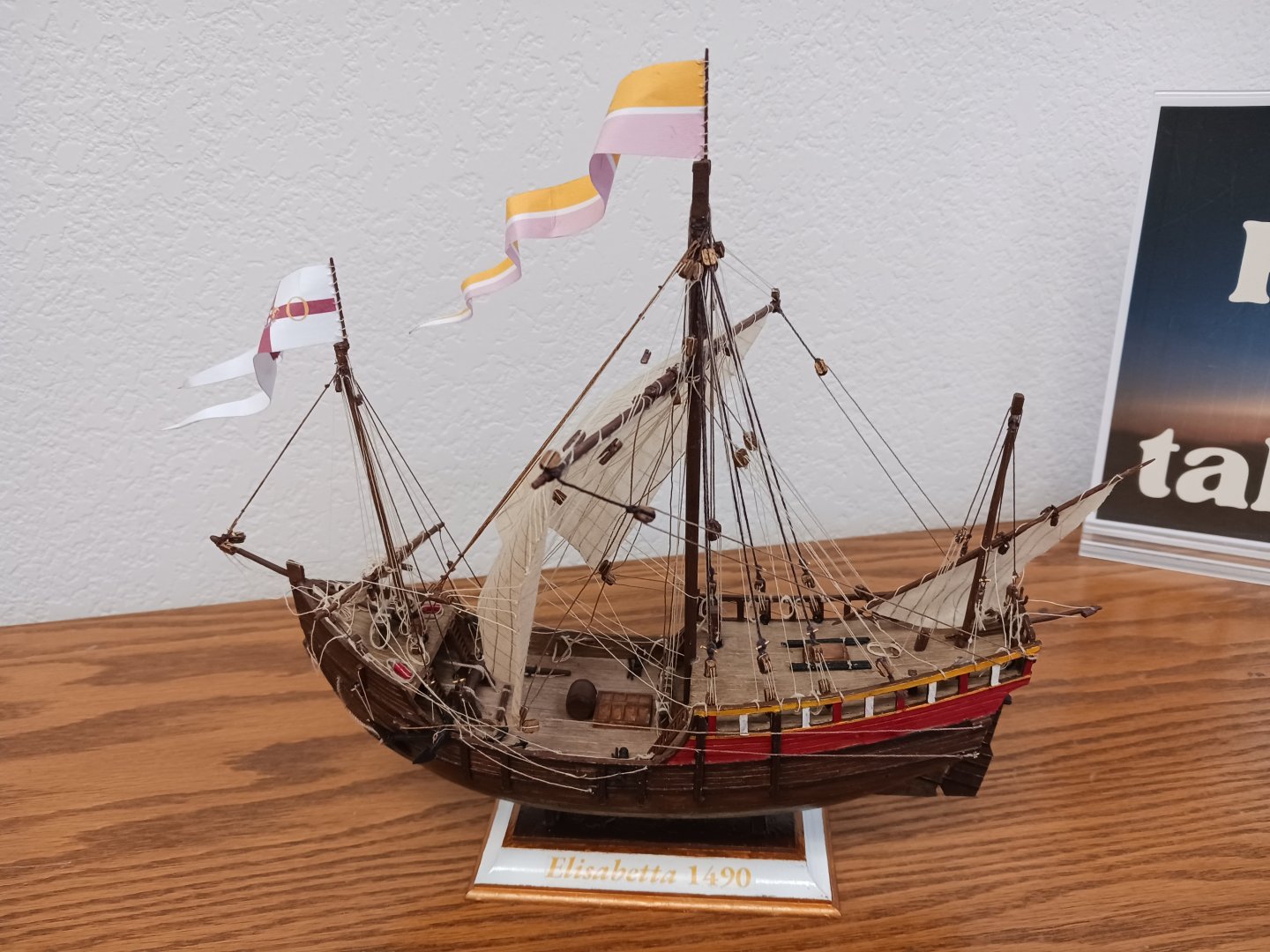-
Posts
1,389 -
Joined
-
Last visited
Content Type
Profiles
Forums
Gallery
Events
Everything posted by Ferrus Manus
-
This is what I spent the last two and a half hours of my life doing: In contrast to Michael D's experience, the fleur-de-lys were bearable. The scrollwork, however, made me want to turn the Reale into an airplane.
- 176 replies
-
- la reale de france
- heller
-
(and 2 more)
Tagged with:
-
When the shade coats are done drying, I will coat the entirety of the hull in a gloss varnish to protect it. After the fleur-de-lys and scrollwork is done, I will apply another coat of varnish. When the ship was under sail, the slaves on the lee side of the ship would sometimes be swamped waist-deep in water. Thus, owing to the low freeboard of the hull, covering the entire thing in gloss would not be outside the realm of reason.
- 176 replies
-
- la reale de france
- heller
-
(and 2 more)
Tagged with:
-
This is the hull so far: The water content in the dark blue shade I used took off some of the paint in the raised areas, which will be repainted gold anyway. I will likely add another coat or two of shade, as the hull is not dark enough. I fixed the waterline as much as reasonably achievable.
- 176 replies
-
- la reale de france
- heller
-
(and 2 more)
Tagged with:
-
- 176 replies
-
- la reale de france
- heller
-
(and 2 more)
Tagged with:
-
This is an image of another Reale. I doubt the broken off bits on mine will make that much difference to the whole. However, crappy reconstructions of them will. I can remake the railings with wooden strips.
- 176 replies
-
- la reale de france
- heller
-
(and 2 more)
Tagged with:
-
Now it's time to start the real fun- painting.
- 176 replies
-
- la reale de france
- heller
-
(and 2 more)
Tagged with:
-
Is it possible I could email Heller for a new sprue? I have heard horror stories about Heller's lack of answering emails. Will they do this for a model that was bought second-hand?
- 176 replies
-
- la reale de france
- heller
-
(and 2 more)
Tagged with:
-
The only other damage is to one of the swivel guns in one of the bags. I assume the piece itself still exists. I will chop off all the thole pins, drill holes, and insert brass rod. That seems reasonable. The construction of the galley has been, so far, a galley. Neither the beakhead nor the stern have any kind of locator pins whatsoever, The decks have some sort of guide points on their underside, but no corresponding element on the hull. In French, comparing something to a galley is a hyperbolic figure of speech indicating the arduous, difficult, or a pain in the neck.
- 176 replies
-
- la reale de france
- heller
-
(and 2 more)
Tagged with:
-
The galley arrived, mostly intact. That's right, mostly. Four of the seat rests are broken off and one of the assemblies is broken in half, some of the thole pins are broken off, and the railings are completely unusable due to warping. The broken-off elements were not in the box. I could just cut all the foot boards (or whatever those are) off and be done there. I will ask 72nova what he did with the railings. The rest of the box:
- 176 replies
-
- la reale de france
- heller
-
(and 2 more)
Tagged with:
-
Thank you! However, I own the Landstrom book, which is something I addressed in the PM. That being said, I should probably make that clear to the rest of the viewers of this log. What I don't have access to (yet) are comprehensive rigging plans that show where (and on what) everything belays. The model and instructions should be here by tomorrow. I can use Google Translate to decipher the instructions, which are sure to be in French.
- 176 replies
-
- la reale de france
- heller
-
(and 2 more)
Tagged with:
-
Wow Baker, that was fast! Thank you for the comments on my last project.
- 176 replies
-
- la reale de france
- heller
-
(and 2 more)
Tagged with:
-
@Isaiah @kirill4 @72Nova @Baker Welcome to the circus. At some point I might have to start charging admittance.
- 176 replies
-
- la reale de france
- heller
-
(and 2 more)
Tagged with:
-
I know the two of you have encouraged me multiple times to replace plastic masts and yards with wooden ones. Well, I did it on the last project, the caravel Elisabetta: I think it turned out satisfactorily.
- 176 replies
-
- la reale de france
- heller
-
(and 2 more)
Tagged with:
-
I know I have a few languishing build logs on this forum. Trust me, I will get to them. A few weeks ago, my father told me I should make at least one of these for a profit and sell it online, as he believes my talent is sufficient to make it a reasonably achievable venture. Well, this is it. He and I both agreed that a model of La Reale (with my added painting skills and rigging) would be a magnificent model and demand a high dollar amount. As such, I ordered the model on eBay, which should arrive by this Thursday. In the meantime, I have been looking rather unsuccessfully for rigging diagrams or even the kit plans, as I expect the Heller rigging diagram to be wrong in many significant ways. This is a painting of the 1694 Reale, which shows practically nothing in the way of rigging. However, it gives me a general idea of what my paint job should look like, at least on the outside. I plan to paint the ship's railings, as well as most of the interior, red. I have bought copious amounts of both dark blue and gold in the meantime. The build is to be as out-of-box as possible. Something like this: This build should take me about six months.
- 176 replies
-
- la reale de france
- heller
-
(and 2 more)
Tagged with:
-
I was talking about tacking the sails (moving them off-center from the mast) and making trusses (just ropes and thimbles) like I did in mine. Check out what I did on my galleon for reference.
- 69 replies
-
- spanish galleon
- Imai
-
(and 1 more)
Tagged with:
-
I suggest doing what I did and filling the slots in the masts near the mast-tops, shaving off the parrels, and making some sort of parrels or truss of your own so you can actually tack the yards. Great paint job!
- 69 replies
-
- spanish galleon
- Imai
-
(and 1 more)
Tagged with:
-
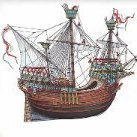
Naval History On This Day, Any Nation
Ferrus Manus replied to Kevin's topic in Nautical/Naval History
July 12, 1346. The forces of Edward III of England finish crossing the English Channel and land at St Vaast la Hogue, Normandy, beginning the invasion of France and kicking off the Hundred Years' War. Famously, Edward face planted while disembarking his ship, writing it off as the land of France being ready to receive him. From there, the English army pillaged, looted, and raped their way through Normandy and on to Calais, in an action now known as the Crecy Campaign. -
Most pilot cutters you see today seem to be highly restored and modernized. As you can see here, pilot cutters in their heyday were kind of a hackjob as well, just not to the same extent as other working boats like oyster smacks:
-
New plan. As you fellow shipwrights know, I worked on the outlines for the Devin Collins for about 2 months. I apologize for my absence. But, we're scrapping the entirety of the plans. This is because I will be halving the number of frames down to 10 as well as the scale. The sheer size of this thing has tormented me ever since I began, and I have now come to the point of making the decision to cut the size in half. At least it can be displayed (as well as constructed) more easily. Silkspan sails will be in order and the rigging blocks and ropes now need to be half the size. That's not all. I will likely buy some wood from the local model shop and probably redo the drawings directly on the wood, at half scale for every other frame. The hull planking thickness can remain the same- it won't show anyway. More than that, the stanchions for the bulwarks will be less load-bearing, and thus easier to pull off. The Lizzie Annie, my main reference for this, should do great in helping me determine the height and thickness of the beams.
-
Wonderful paint job! However, from sources such as Hendrick Cornelisz Vroom, you will find that the Spanish had given up the fancy paint jobs by 1607. That being said, it is your model, and you should choose whatever looks best to you.
- 69 replies
-
- spanish galleon
- Imai
-
(and 1 more)
Tagged with:
-
Another piece of advice is to decide early on which "version" of the kit you intend to replicate. If you do a version of the galleon from the Spanish Armada, it will look significantly different than a galleon from 1607. This will affect the paint job and parts of the rigging. The primary sources you intend to use will also be different. I personally prefer the "1607" version better, but the choice is yours. Outside of obvious design differences driven by a difference in the intended look of the model, if Kirill has done something significantly different than I have, you should probably default to his techniques. For example, the painting of lines, the use of rope coils, etc.
- 69 replies
-
- spanish galleon
- Imai
-
(and 1 more)
Tagged with:
-
You can make silkspan sails look realistic for this model, and it would be more scale-accurate than cloth at 1/100. However, it would take some effort. I suggest using an actual tutorial instead of looking at how I do mine, as I recognize mine could be better. I wish I had done my own shrouds and ratlines for mine. Maybe I'll do this same model again someday.
- 69 replies
-
- spanish galleon
- Imai
-
(and 1 more)
Tagged with:
About us
Modelshipworld - Advancing Ship Modeling through Research
SSL Secured
Your security is important for us so this Website is SSL-Secured
NRG Mailing Address
Nautical Research Guild
237 South Lincoln Street
Westmont IL, 60559-1917
Model Ship World ® and the MSW logo are Registered Trademarks, and belong to the Nautical Research Guild (United States Patent and Trademark Office: No. 6,929,264 & No. 6,929,274, registered Dec. 20, 2022)
Helpful Links
About the NRG
If you enjoy building ship models that are historically accurate as well as beautiful, then The Nautical Research Guild (NRG) is just right for you.
The Guild is a non-profit educational organization whose mission is to “Advance Ship Modeling Through Research”. We provide support to our members in their efforts to raise the quality of their model ships.
The Nautical Research Guild has published our world-renowned quarterly magazine, The Nautical Research Journal, since 1955. The pages of the Journal are full of articles by accomplished ship modelers who show you how they create those exquisite details on their models, and by maritime historians who show you the correct details to build. The Journal is available in both print and digital editions. Go to the NRG web site (www.thenrg.org) to download a complimentary digital copy of the Journal. The NRG also publishes plan sets, books and compilations of back issues of the Journal and the former Ships in Scale and Model Ship Builder magazines.






